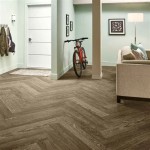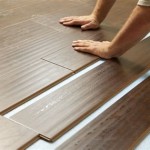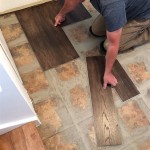What Can You Use To Get Paint Off Wood Floors
Removing paint from wood floors can be a meticulous and potentially challenging task, requiring careful consideration of the type of paint, the age of the paint, the finish of the wood floor, and the desired outcome. A variety of methods and products are available, each with its own advantages and disadvantages. Choosing the appropriate method is crucial to effectively remove the paint without damaging the wood surface underneath.
Before embarking on any paint removal process, it is essential to identify the type of paint involved. Water-based paints, such as latex or acrylic, are generally easier to remove than oil-based paints. The age of the paint also plays a significant role. Fresh paint is typically more amenable to removal, whereas older, dried, and potentially multiple layers of paint can present a more formidable challenge. Understanding these factors will guide the selection of the most effective and least damaging removal technique.
Furthermore, the type of wood floor finish needs to be considered. Floors finished with polyurethane or varnish are typically more resilient to paint removal methods than floors with wax or oil finishes. Aggressive cleaning techniques or harsh chemicals could strip or damage the existing finish, necessitating refinishing of the entire floor. Therefore, a cautious and methodical approach is always recommended, starting with the gentlest methods and gradually escalating if necessary.
Identifying the Paint and Floor Finish
Accurate identification of the paint type and floor finish is the first step in choosing the correct removal method. Water-based paints respond well to water-based solvents and gentle scraping. Oil-based paints, however, often require stronger solvents. A simple test can help determine the paint type: soak a cotton ball with denatured alcohol and rub it on a small, inconspicuous area of the painted surface. If the paint softens or comes off easily, it is likely a water-based paint.
Determining the floor finish can be slightly more complex. Generally, polyurethane and varnish finishes create a hard, durable surface. Wax finishes, on the other hand, tend to be softer and more susceptible to damage from solvents and heat. A simple visual inspection can sometimes be helpful. Polyurethane and varnish finishes often have a distinct sheen, while wax finishes may appear more matte. It's often advisable to err on the side of caution and treat the floor as if it has a delicate finish, particularly if its history is unknown.
If unsure of the paint or finish type, consulting with a professional flooring contractor or paint specialist is highly recommended. They can offer expert advice and potentially identify the materials through microscopic analysis or other diagnostic techniques.
Methods for Removing Paint Splatters and Small Spots
For removing small paint splatters or spots, several gentle methods can be employed to try and minimize the impact to your wood floor. These approaches are often sufficient for fresh paint spills and are less likely to damage the existing finish.
Warm water and dish soap provide a good starting point. Mix a mild solution of dish soap in warm water and gently scrub the paint spot with a soft cloth or sponge. Avoid excessive scrubbing, which can damage the floor finish. For water-based paints, this method is often effective, especially if addressed promptly. Rinse the area with clean water and dry thoroughly with a clean cloth.
A plastic scraper or putty knife can be used to carefully lift the paint from the surface. Ensure the scraper has a smooth edge to prevent scratching the wood. Softening the paint with warm water or a hairdryer (on a low setting) can make this process easier. Work slowly and deliberately, applying gentle pressure to avoid gouging or damaging the floor.
For stubborn paint spots that do not respond to water and soap, mineral spirits can be used sparingly. Apply mineral spirits to a clean cloth and gently dab the paint spot. Avoid saturating the area, as mineral spirits can damage certain floor finishes. Wipe away any residue with a clean, dry cloth. Always test mineral spirits in an inconspicuous area first to ensure it does not harm the floor finish.
Another option is using a specialized paint remover designed for delicate surfaces. These products are typically formulated to be less aggressive than standard paint strippers and are safe for use on wood floors with proper application. Carefully follow the manufacturer's instructions and always test in an inconspicuous area before applying to the entire paint spot.
The use of ice can also be effective on certain types of paint. Applying an ice pack to the paint spot for several minutes can cause the paint to become brittle and easier to chip away with a plastic scraper. Exercise caution to prevent water damage to the floor.
Methods for Removing Larger Areas of Paint
When dealing with larger areas of paint, such as spills or complete coatings, more aggressive methods may be required. However, it is still crucial to proceed with caution to minimize the risk of damage to the wood floor.
Chemical paint strippers are often used for removing larger areas of paint. These strippers contain solvents that dissolve the paint layers, making them easier to remove. Choose a paint stripper specifically designed for wood surfaces and follow the manufacturer's instructions carefully. Apply the stripper in a well-ventilated area, wearing appropriate protective gear, such as gloves and eye protection. Allow the stripper to dwell for the recommended time, then scrape away the softened paint with a plastic scraper. Multiple applications may be necessary to remove all layers of paint. After removing the paint, neutralize the stripper according to the manufacturer's instructions and clean the floor thoroughly.
Heat guns can also be used to soften paint for removal. Use the heat gun on a low setting and hold it several inches away from the surface. Move the heat gun back and forth to avoid overheating the wood. As the paint softens, scrape it away with a plastic scraper. Be extremely cautious to avoid scorching the wood or igniting the paint fumes. This method requires practice and patience but it can be effective for removing large areas of paint without the use of harsh chemicals. It also poses a significant fire risk and should only be used by experienced individuals with appropriate safety precautions.
Sanding is another option for removing paint, but it should be used as a last resort. Sanding can easily damage the wood floor if not done carefully. Use a fine-grit sandpaper (120-grit or higher) and sand lightly, following the grain of the wood. Avoid applying too much pressure, as this can create unevenness. Regularly clean the sandpaper to prevent clogging. After sanding, vacuum the area thoroughly and apply a new finish to protect the wood.
Mechanical sanders, such as orbital sanders, can make the process faster and more efficient but require even greater caution. Drum sanders, typically used for refinishing entire floors, are usually too aggressive for removing small areas of paint and should be avoided unless the entire floor is being refinished.
For complex situations or valuable wood floors, consider hiring a professional floor refinishing service. They have the experience and equipment to safely and effectively remove paint without damaging the wood. They can also provide advice on repairing any damage and refinishing the floor to its original condition.
When using any of these methods, it is important to properly prepare the area. Cover surrounding surfaces with drop cloths or plastic sheeting to protect them from spills and splatters. Wear appropriate protective gear, such as gloves, eye protection, and a respirator, especially when working with chemical paint strippers or sanding.
After removing the paint, thoroughly clean the floor to remove any residue from the paint or cleaning products. Use a mild detergent and water, and dry the floor completely. Inspect the floor for any damage, such as scratches, gouges, or discoloration. Repair any damage as needed before applying a new finish.
Protecting your wood floors before painting is always preferred. Use drop cloths and painter's tape to prevent paint from getting on the floor in the first place. Clean up any spills immediately to prevent them from drying and becoming more difficult to remove.

How To Remove Paint Off Hardwood Floors Safely

Don S Room Progress How To Remove Paint From Wood Floors At Home With Ashley

Easily Remove Paint From Your Floors

Goof Off 12 Oz Paint Splatter Remover For Hardwood Fg900 The Home

Goof Off 12 Oz Paint Splatter Remover For Hardwood Fg900 The Home

How To Remove Paint From Hard Wood Floors

Tested 10 Easy Ways To Get Paint Off Hardwood Floors Torera George

Easiest Ways To Clean Paint Stains From Your Hardwood Floors

How To Get Paint Off Wood Floors Sawdust Girl

The Simple Kitty Litter Trick For Cleaning Spilled Paint Off Hardwood Floors
See Also







